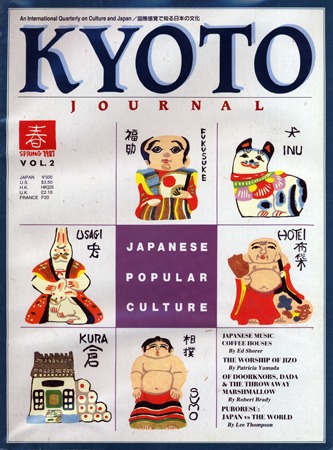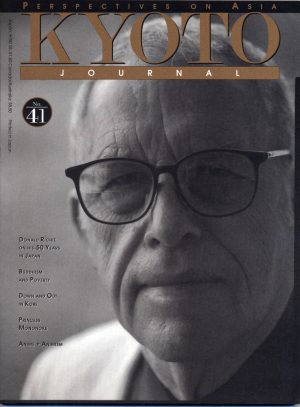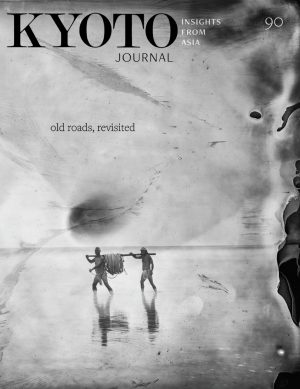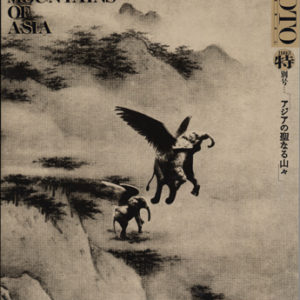- You cannot add "Kyoto Journal Issue 8" to the cart because the product is out of stock.
Kyoto Journal Issue 2
¥880
(US$8)
Japanese Popular Culture
New Kyoto
The Worship of Jizo
Yokoo Tadanori
Nanao Sakaki on the Environment
Out of stock
— Patricia Yamada, The Worship of Jizo
From my small house in Arashiyama Miyanomae-cho, close under the mountains at the westernmost end of Shijo-dori, I hear the beating of the drum at nearby Matsuo Taisha. The sounding of the drum signals a rite at the main inner altar: it may be sake brewers or miso makers come to invoke prosperity in their enterprise, it may be parents and grandmother of a young baby for a blessing, it may be a wedding, it may be anyone who wishes to ask for health, long life, safety at home and on the road, success in passing exams, protection from evils. Even a new car may be brought for a short rite to purify it and rid it of possible evil spirits, though this does not take place at the main altar but in a spot set aside in the north parking lot. — Jane Wieman, A Year’s Passing: Festivals at Matsuo Taisha
Over half the population of Kyoto remembers a past that was as unlike the present as bamboo is to steel. Four-hundred year-old shrines stand wedged between office buildings, geisha wear blue jeans on their days off, 100-year-old shops share walls with flashy discos and high-fashion boutiques, temple precincts have loudspeakers and Coke machines, kids study abacus and play video games. Nowhere in Japan is pop culture more obvious than in Kyoto; it stands out like Madonna at a quilting bee. — Diane Durston, New Kyoto
Contents:
Nine-headed Dragon River: Zen Journals 1969-1982, by Peter Matthiesson — Ken Rodgers
Old Kyoto: a Guide to Traditional Shops, Restaurants and Inns, by Diane Durston — Mike Palls
¥880 (approx US$8) Need a currency converter? Use this one.
Shipping within Japan is free. But the price excludes Japanese sales tax.
Shipping to the North America/Europe/Oceania/Asia: ¥130 (about US$1.15), 5~10 days. We’re sorry to say that due to unreliable postal systems in Africa and South America we can only offer tracked mail by EMS, which is rather more expensive.
Please allow for 1-3 business days for processing prior to dispatch.
Is this a gift? We can put in a simple gift tag. If you would like it delivered direct to the recipient please just make sure the shipping address is correct!






